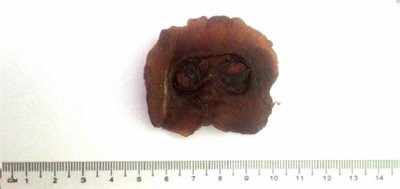
Asam keping
Dr Suraya A. Sani, recent PhD graduate from The University of Nottingham Malaysia Campus (UNMC), has been working with a tropical fruit, locally called asam keping, under the supervision of Dr Teng-Jin Khoo at UNMC’s School of Pharmacy. Funded by the Sarawak Tunku Abdul Rahman Scholarship, she was able to spend her time on research work for the first two years at UNMC and a year working on her research at the Centre for BioMolecular Sciences at University Park, The University of Nottingham, UK under the co-supervision of Professor Dr Jonas Emsley.
Dr Suraya A. Sani conducts research on the medicinal properties of the Garcinia plant species; a plant species which is largely available in Malaysia and throughout Southeast Asia. The purple mangosteen tree and asam keping is from the Garcinia species. Dr Suraya’s research led her to the findings of the medicinal role of specific plant secondary metabolites that exist in the Garcinia species, which is found in Malaysia in abundance. The fruit of the asam keping tree can be used to prevent atherosclerosis, the hardening and narrowing of the arteries.
Asam keping has been used in local Malaysian cuisines for many years and ethno pharmacologically is believed to have healing properties in lowering hypertension. It is non toxic and edible. “My research on asam keping proved that it contains natural healing and prevention properties. The asam keping is easily available in Malaysia and I usually get it from the local market,” said Dr Suraya.
“After 3 years of painstaking research work on the medicinal role of plants in preventing atherosclerosis, her work has garnered successful research funding and international publication,” said Dr Khoo Teng Jin, from the School of Pharmacy who supervised this research project. Dr Suraya’s research in this area will also help in spreading awareness of the role of edible plants found in local cuisine, which contains active secondary metabolites with the potential to be developed further.
http://www.researchsea.com/html/article.php/aid/10008/cid/3/research/medicine/the_university_of_nottingham_malaysia_campus/the_medicinal_properties_of_tropical_fruit__asam_keping_.html







Recent Comments